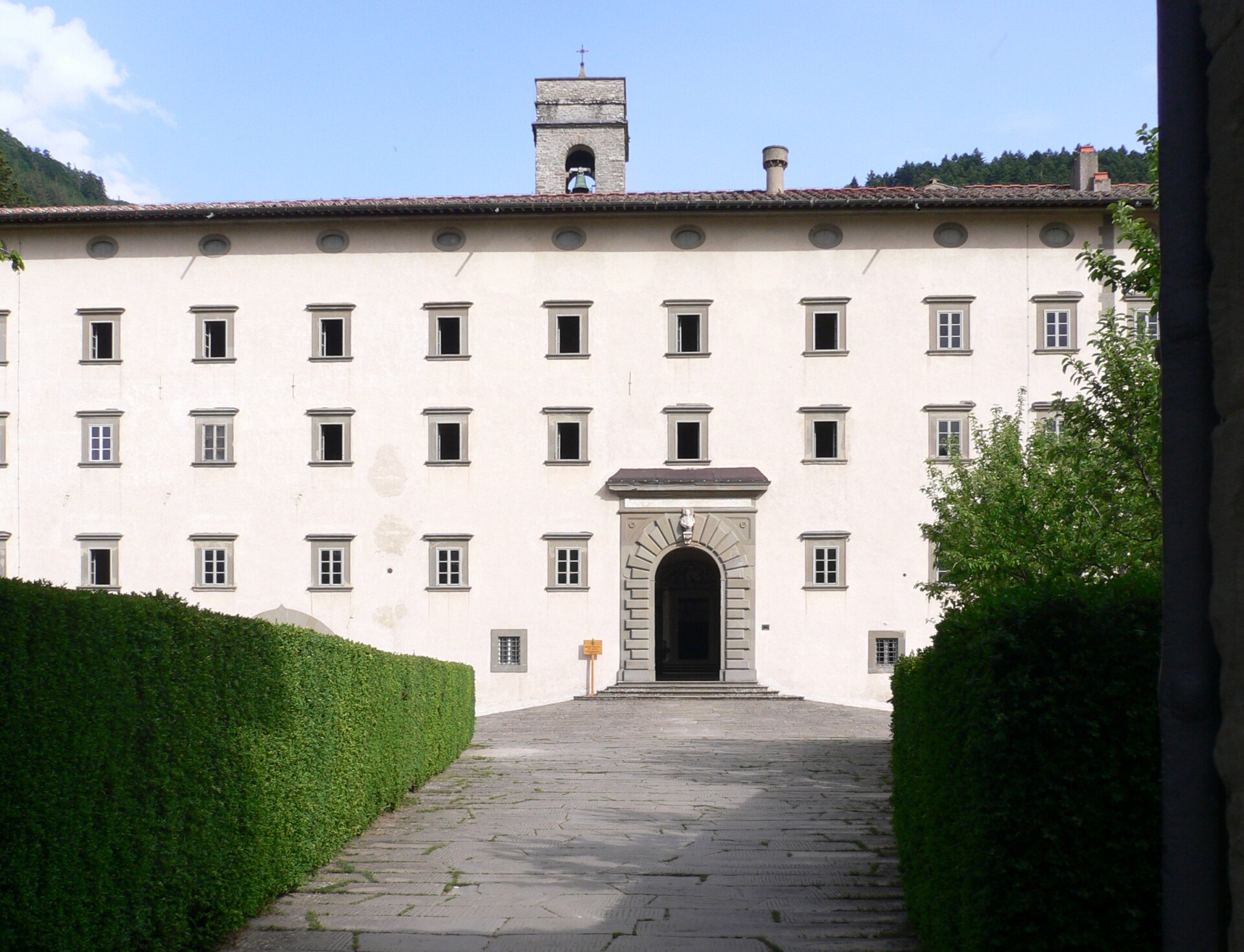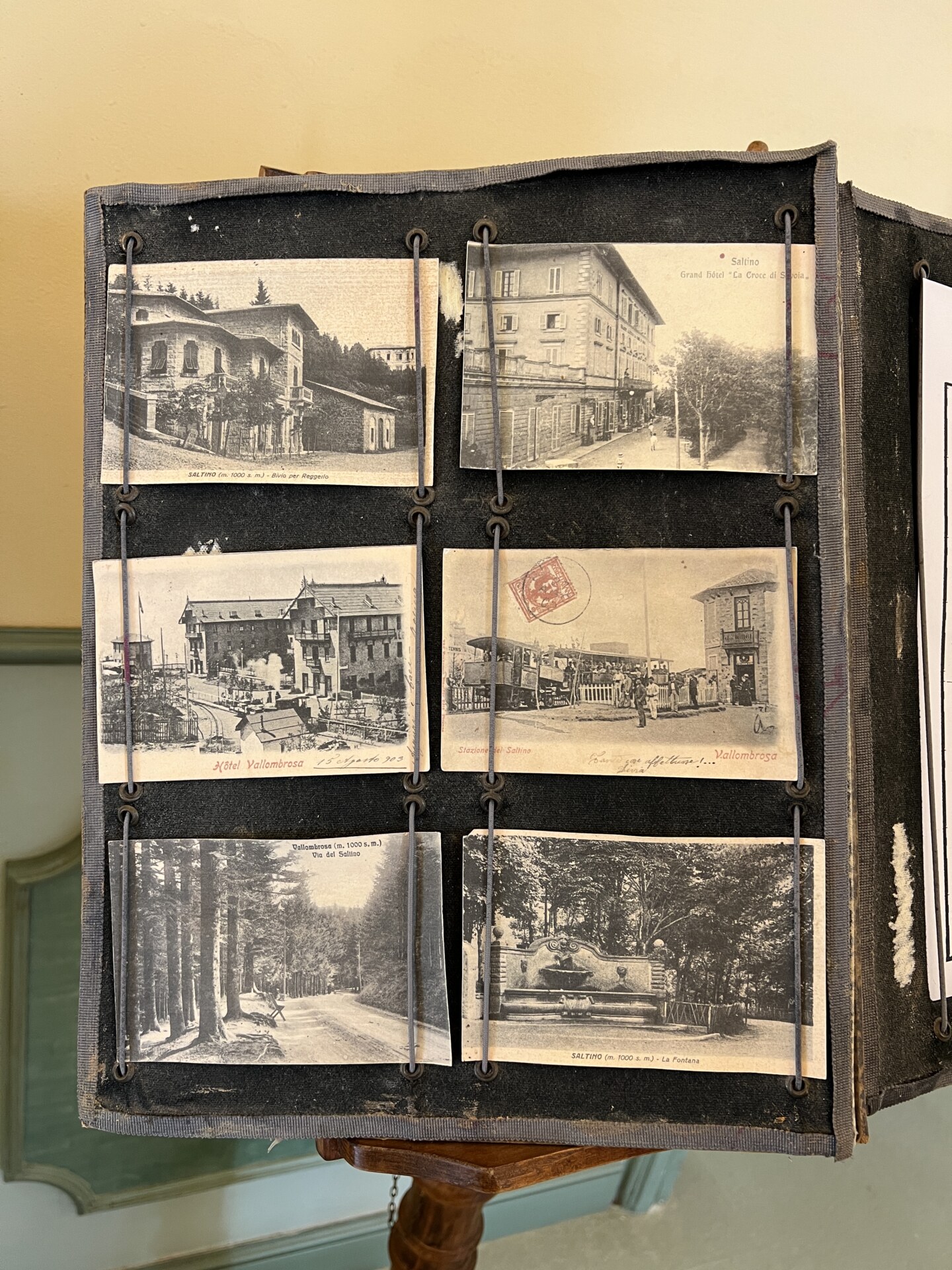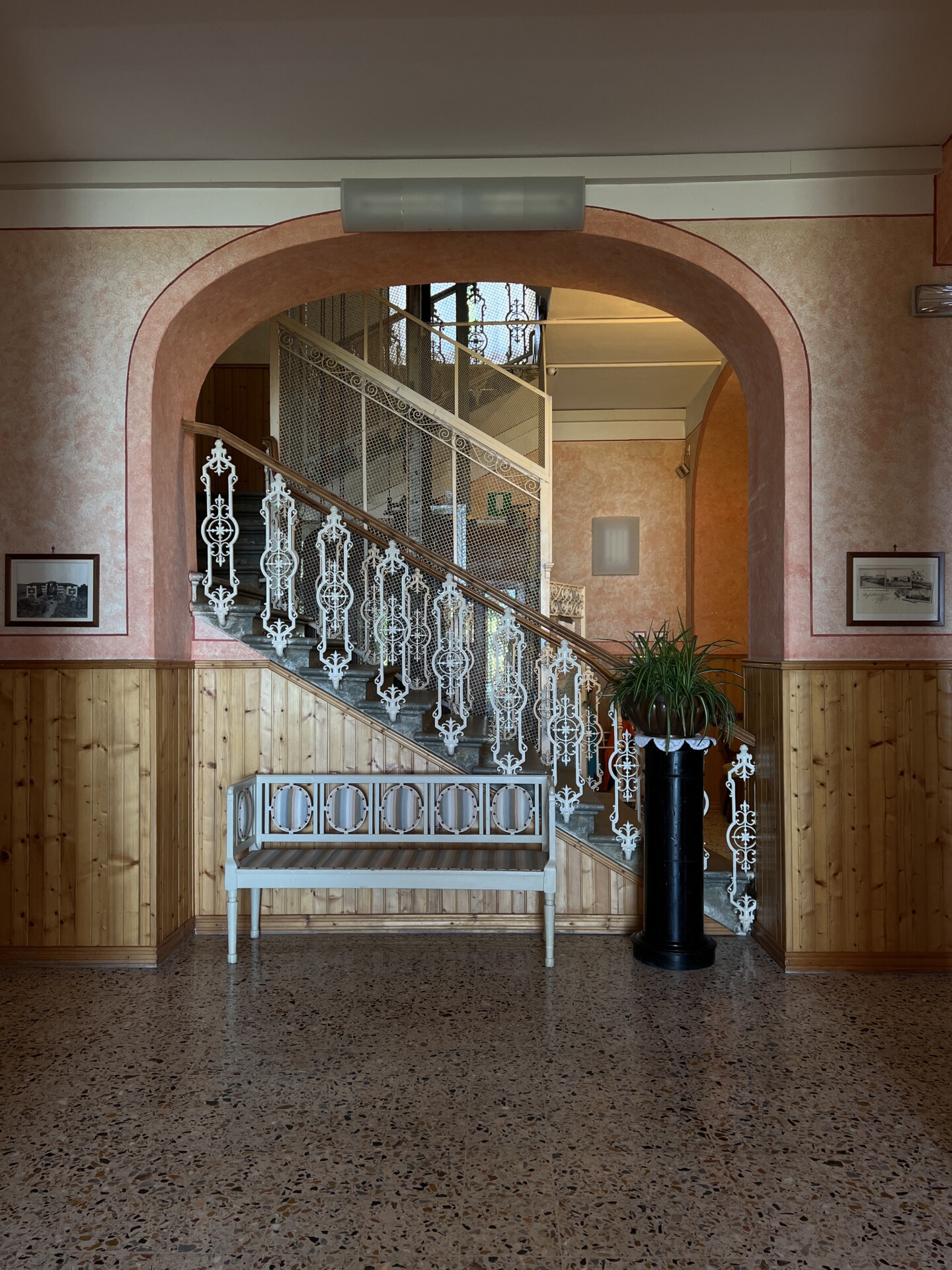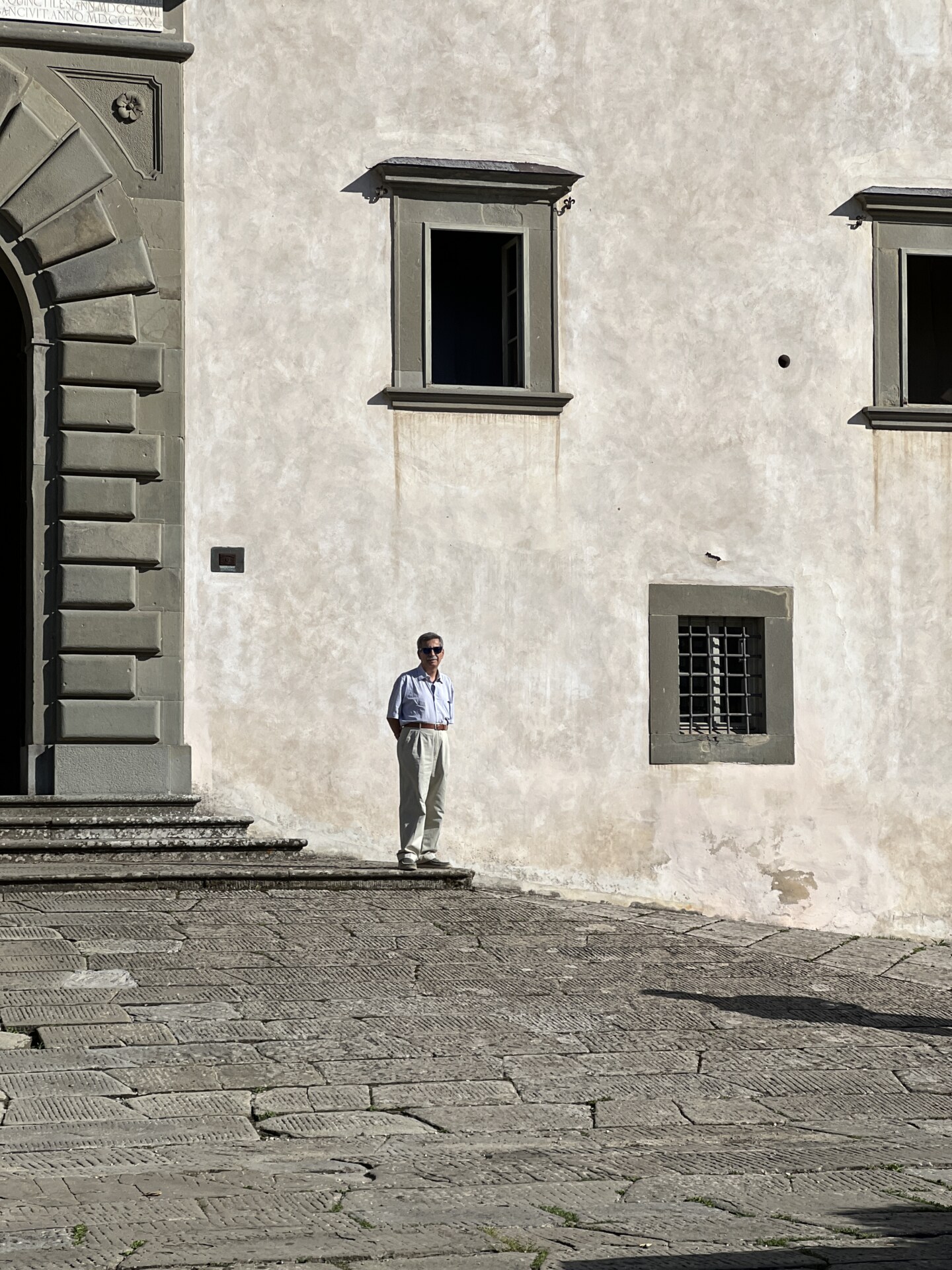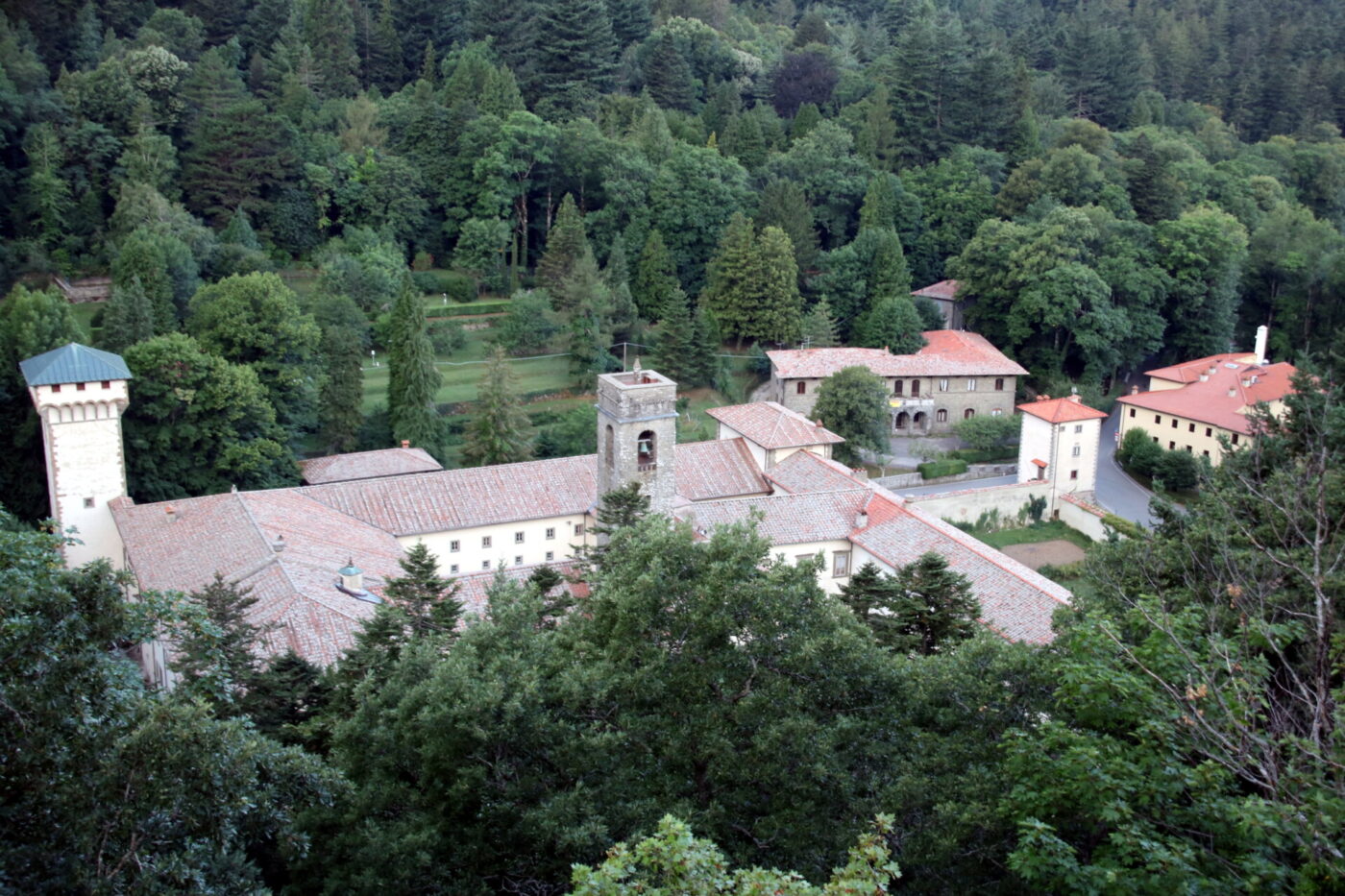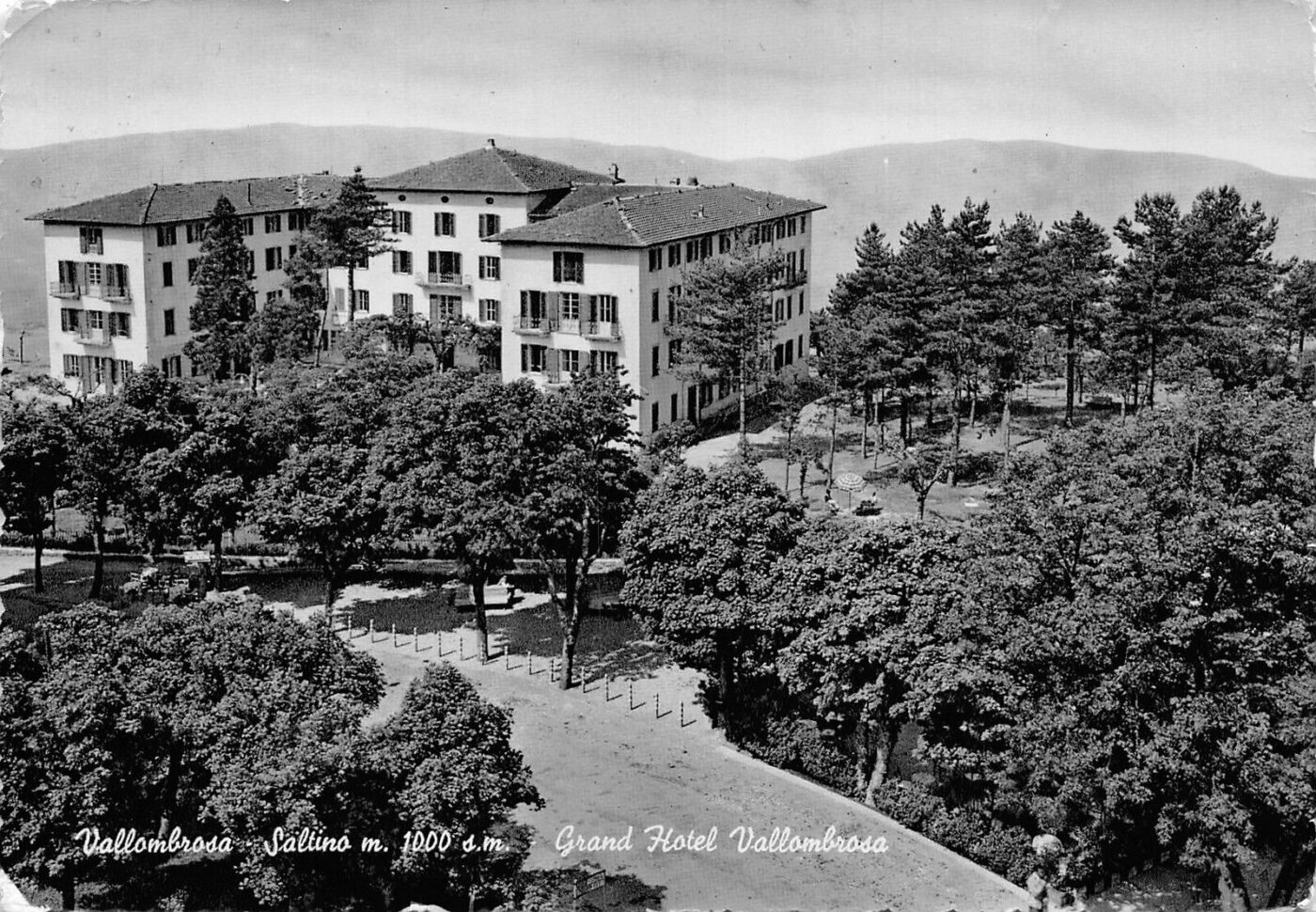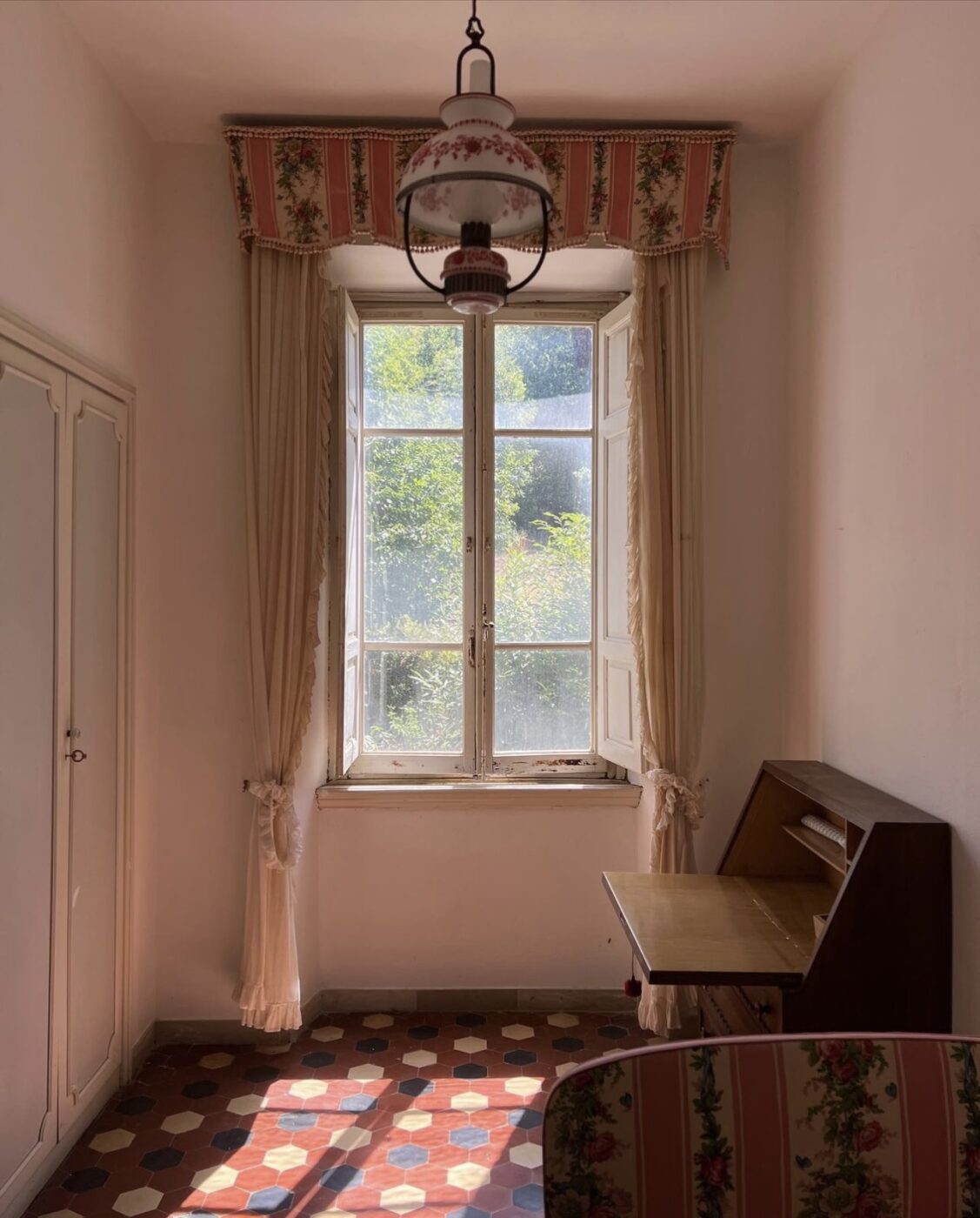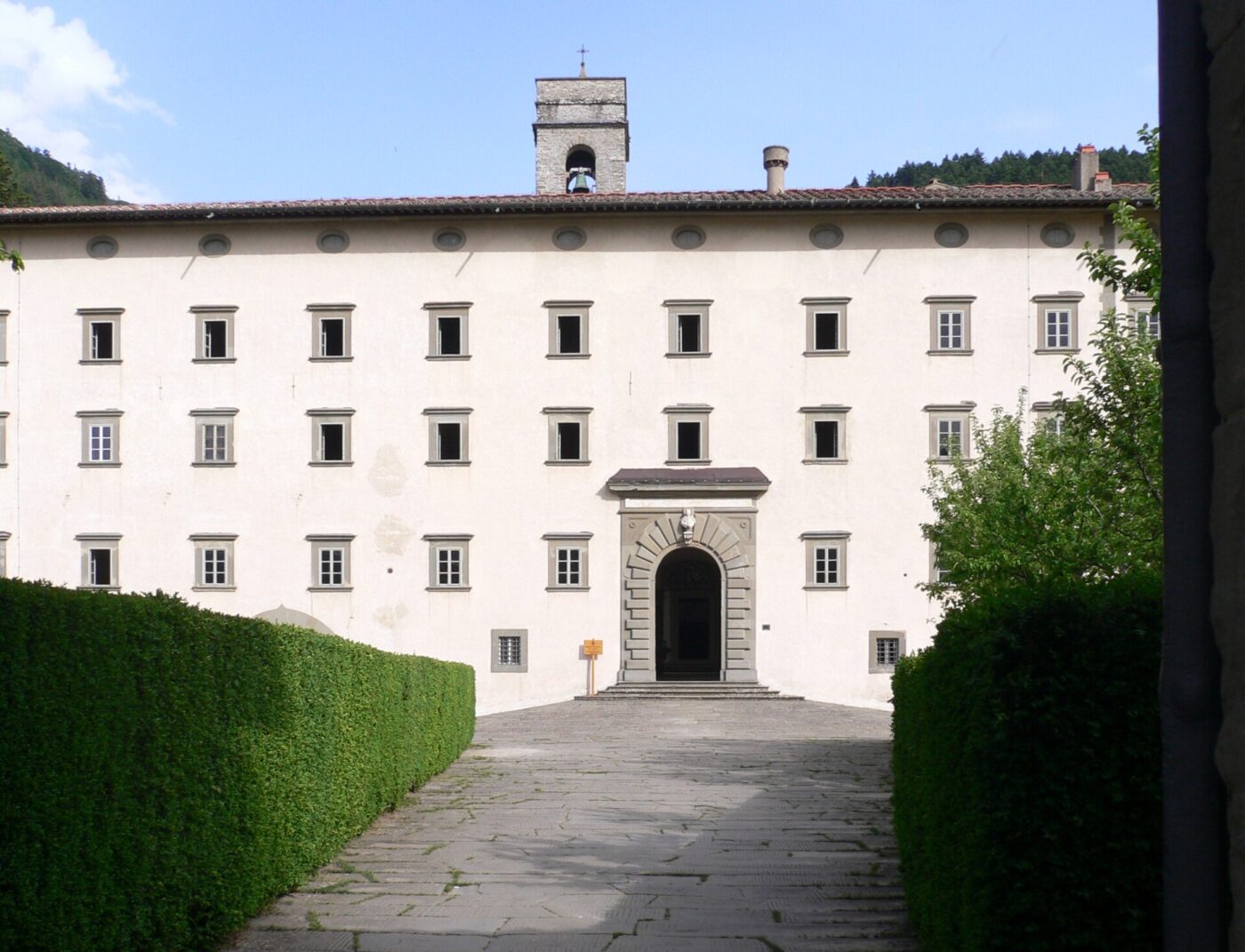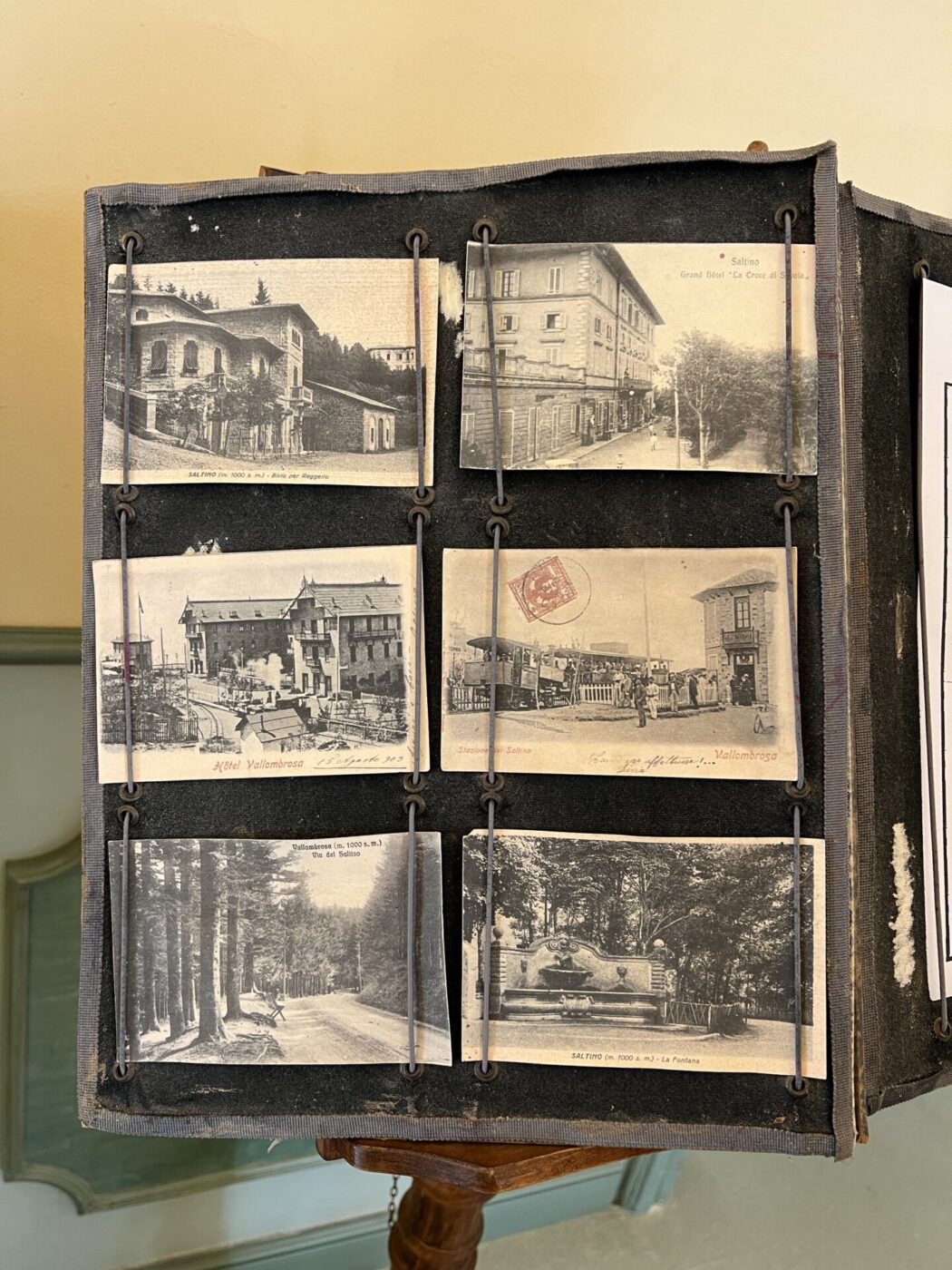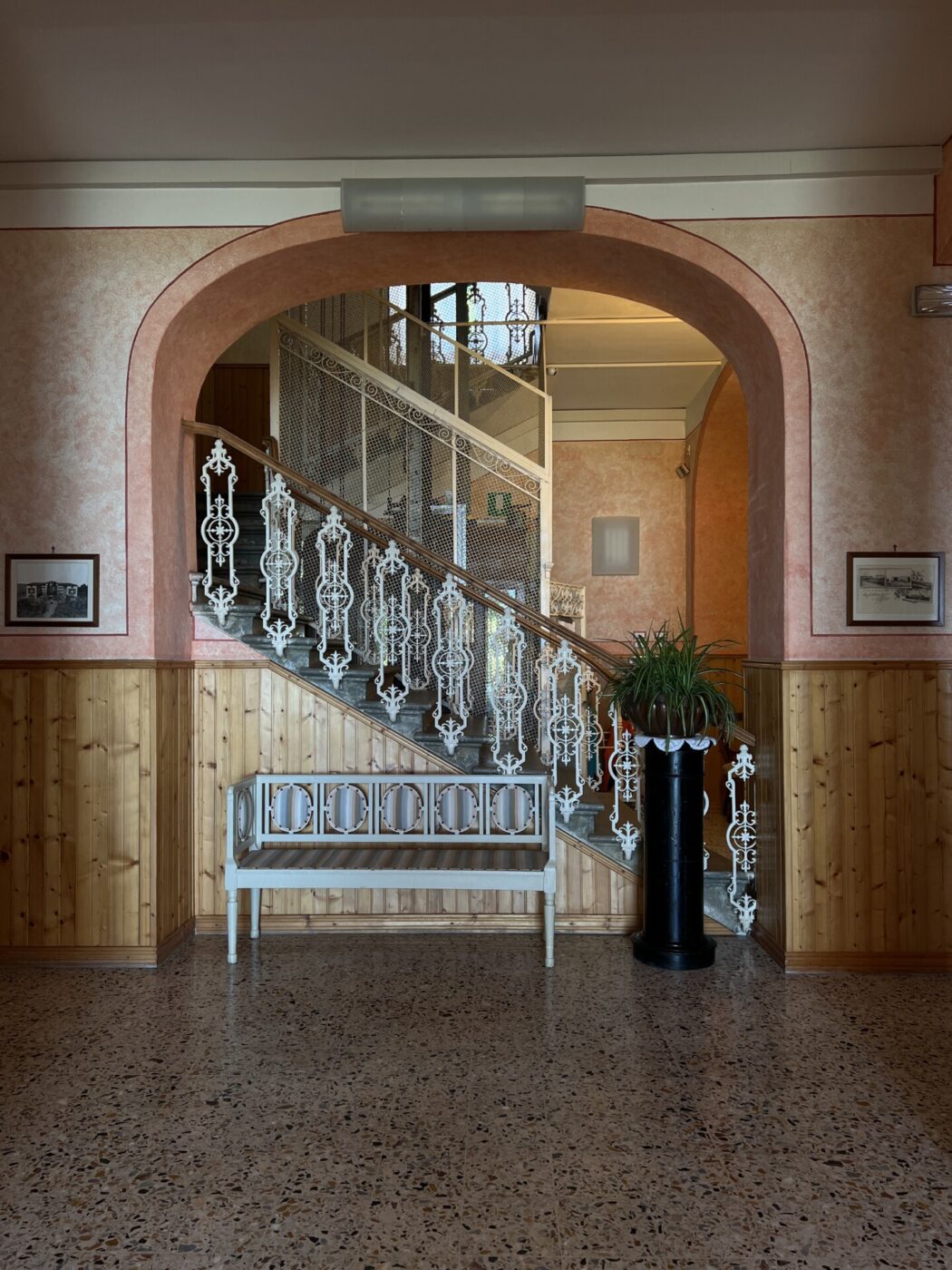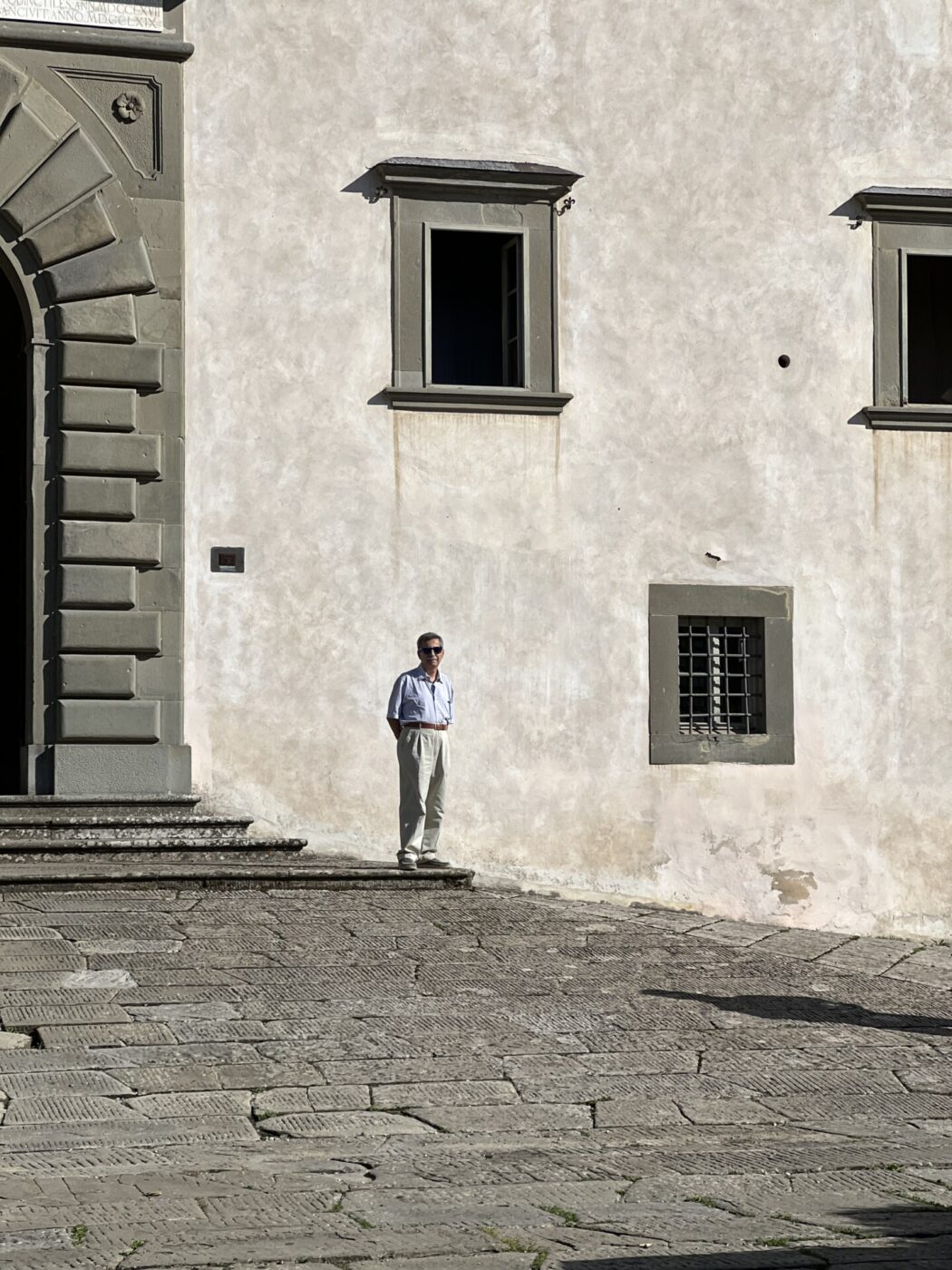In the heart of Tuscany, about 30 kilometers from Florence, there lies a hidden gem that has for centuries served as sanctuary for those who venture through the fir tree forest to find it: Vallombrosa. Vallombrosa was founded with its eponymous Abbey–which encompasses a world unto itself. The Abbey and the tiny borgo around it, is nestled in the Apennine mountains, in what has now become the Vallombrosa Nature Reserve, a serene spot that seems lightyears away from the chaos of Florence’s city center.
It all started in 1036, when St. John Gualbert found himself lost in the woods during a storm. He took refuge under a giant beech tree and miraculously was able to stay dry throughout the night. The next day, he decided to build a hermitage at that very spot, and thus Vallombrosa was born. Over the centuries, this humble hermitage transformed into a grand abbey, nestled amidst a dense forest of towering fir trees. The monks who resided there were skilled in the art of woodworking, using the resin, bark, and plants from the forest to build their abbey, keep themselves warm, and even craft medicinal remedies, some of which are still being produced at the Abbey’s Antica Farmacia.
Despite its secluded location, Vallombrosa attracted a handful of visitors over those first years, all of whom were guests of the monks. John Milton was one such guest who found inspiration in these hallowed grounds, drawing upon them for his work “Paradise Lost.” And in the 19th century, the mysticism of Vallombrosa drew the likes of William Wordsworth and Mary Shelley during their travels in Italy.
It wasn’t until 1877 that a carriage road connecting the abbey to the nearby village of Tosi was constructed, making the previously isolated location more accessible. The first hotel, known as the Croce di Savoia, was set up just outside the entrance to the abbey, and it wasn’t long before a train line was constructed and people began building their own villas in the area. Vallombrosa became more than just a hidden abbey: it became a destination for the wealthy and discerning traveler seeking respite in the beauty of nature.
Today, Vallombrosa is still a breath of fresh air, where you can unwind in nature and stargaze from the top of Mount Secchieta. Here, time ticks slower, and it is understood that 2 to 4 PM are hours considered sacred. One can partake in an aperitif at the Bar, adjacent to the Grand Hotel; visit the local grocery store for bread and finocchiona; spread plaid blankets at the Pratone; enjoy the rustle of the wind mixed with the scent of barbecued meat.

The Abbey
The true historical and artistic nucleus of Vallombrosa lies within the abbey. This forgotten hermitage has remained intimately connected to the surrounding area for centuries, and for the seven monks that still live there, it forms the very foundation of their religious life. The Romanesque church, which was once quite bare and unadorned, underwent a transformation in the 1700s, taking on a Baroque style. The stucco and gold work, however, remained modest, in accordance with the monastic rule that requires sobriety and a “low profile” attitude.
The frescoes, the water fountain in the sacristy, and the portraits of the abbots in the large refectory are all magnificent. But the true treasure lies in the 15th-century kitchen, which boasts a monumental fireplace that is still used today by the monks. It is here that they gather for Christmas toasts and feasts, and the atmosphere remains as rich and vibrant as it was centuries ago. Today, you can still taste herbal teas and ancient tonics made with medicinal plants and herbs, as well as Vallombrosa’s Dry Gin, each of which boast mystical healing properties.
Grand Hotel Vallombrosa
Whether or not you decide to spring for a night’s stay at the Grand Hotel Vallombrosa, the classic hotel enshrouded in greenery is worth checking out. On clear days, you can even get a glimpse of Florence from the windows. By the turn of the 20th century, the Grand Hotel Vallombrosa had become a coveted destination for high society, not only in Italy but also beyond its borders. Although not quite as lavish as the grand hotels in the capitals of Europe, the Grand Hotel Vallombrosa exuded an undeniable elegance that lured prominent figures among the aristocracy and distinguished politicians of the Kingdom.
The likes of Donna Franca Florio, who famously arrived in Vallombrosa with a carriage reserved exclusively for her trunk-filled wardrobe, Gabriele d’Annunzio, Eleonora Duse, King Umberto of Savoy, and a long list of nobles and industrialists were all drawn to the allure of the Grand Hotel. They danced at grand balls, attended theatrical performances, played lawn tennis, and while nurses tended to their children, ladies donning wide-brimmed hats and chiffon veils sipped tea in the vast gardens.
In the summer of 1902, disaster struck when the Grand Hotel Vallombrosa caught fire, allegedly due to the personal vendetta of a former employee who had been dismissed. Little remained but a charred skeleton, yet it was rebuilt with lightning speed, and in 1903, it was fully refurbished and reopened with great pomp and circumstance.
Today, the hotel retains much of its original charm, notably the fresco at the entrance depicting a phoenix rising from the ashes and the Latin inscription “Post fata resurgo” (which translates to “rise again after death”), a poignant reminder of the tragic event that occurred there.
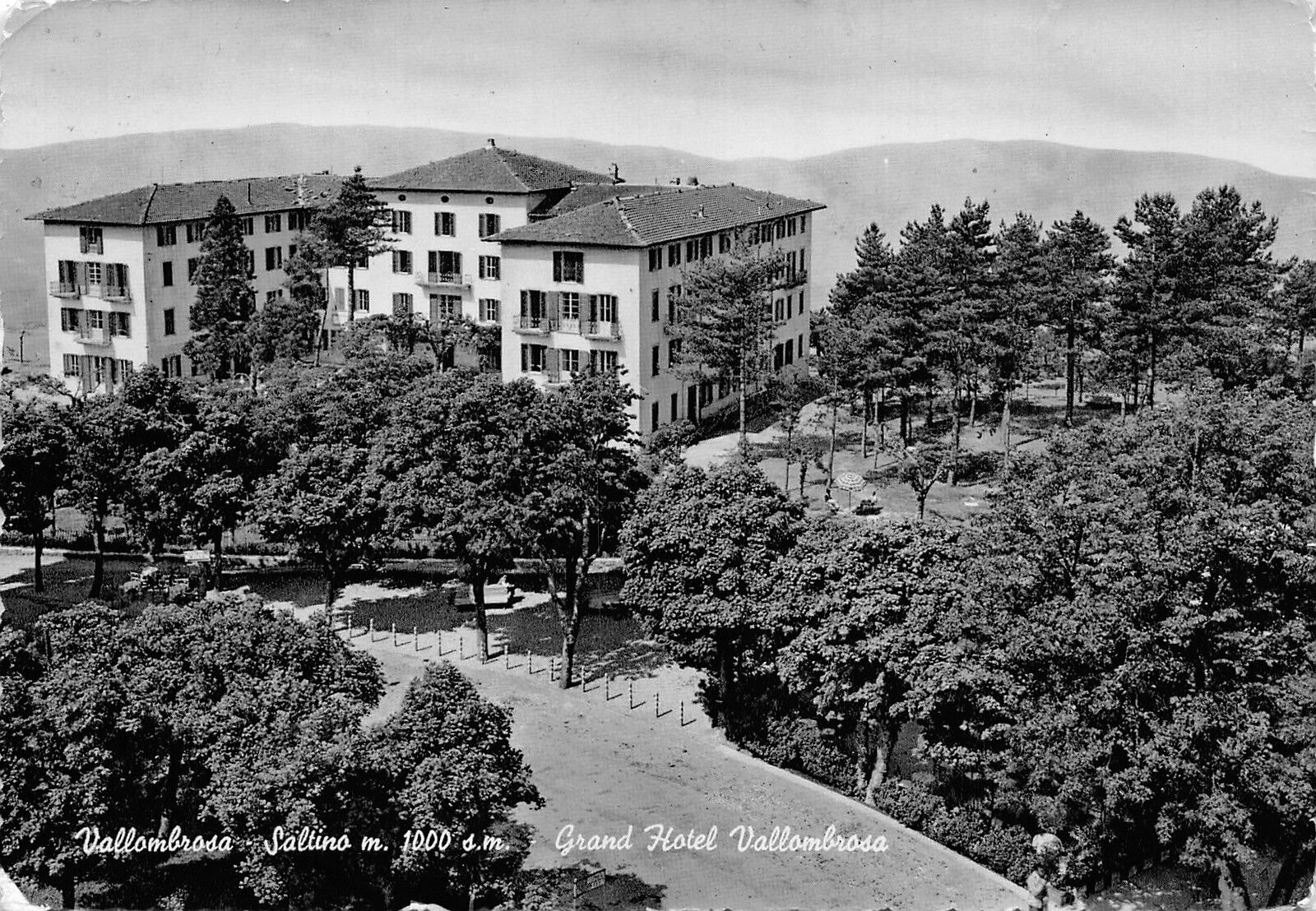
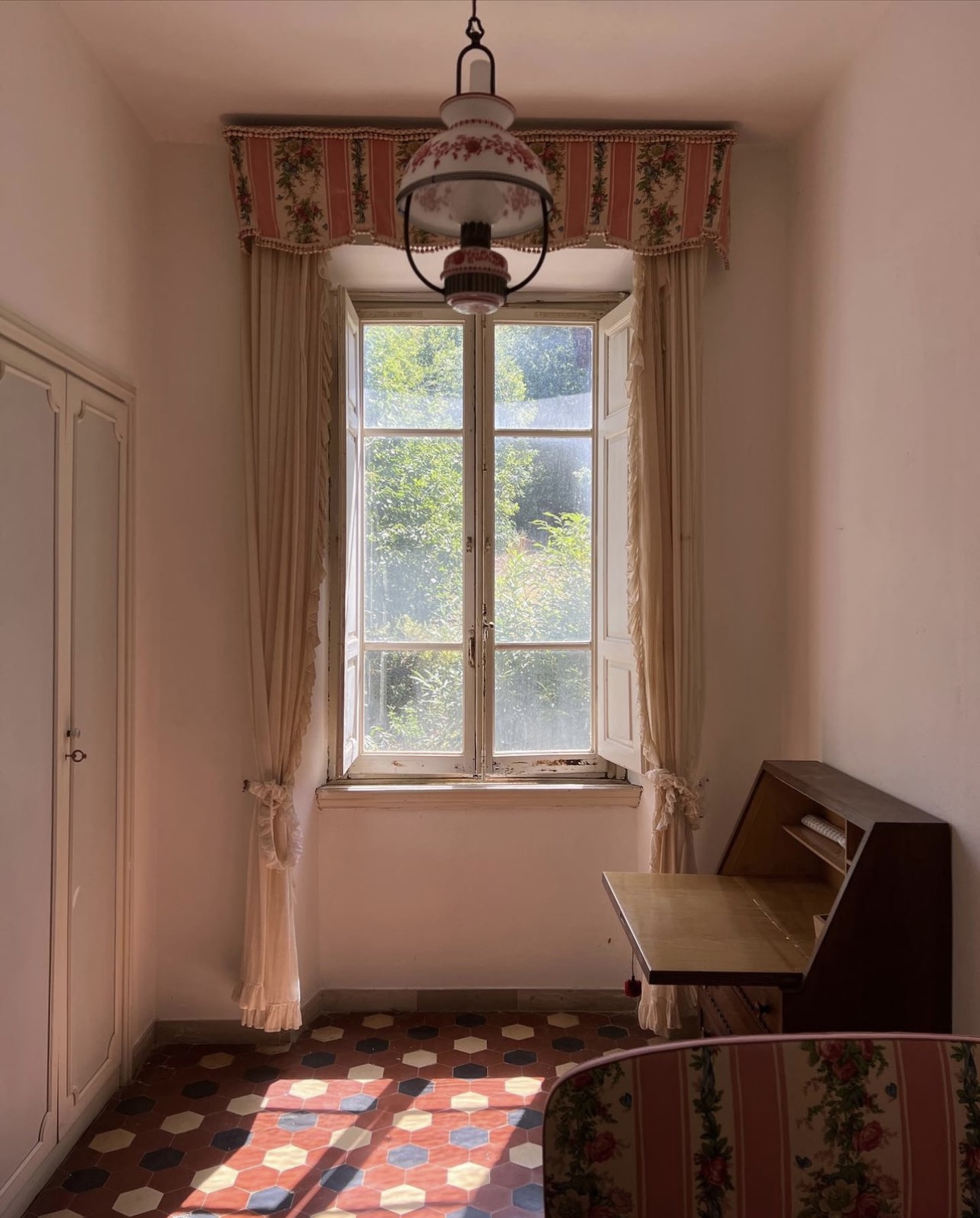
The Chapel Circuit
Among the easiest and most beautiful paths through the surrounding woods is the Chapel Circuit, a path that retraces a sort of Stations of the Cross. Whether one sees it as a religious pilgrimage or a way to immerse oneself in the serene atmosphere, you’ll pass chapels dedicated to saints such as St. Jerome and St. Catherine before reaching the Holy Staircase. These steps lead to the Paradisino, where a panoramic view of the forest will reward you for your efforts. It was here that English poet John Milton stayed in the 17th century.
The circuit also passes the site of the Faggio Santo, the tree which Gualbert took refuge under on that fateful night. Today, the imposing beech tree is 150 years old, planted in the exact same spot as the original.
The Villini
Exquisite, early 20th-century villini pepper the landscape of Vallombrosa. In 1903, when the Grand Hotel reopened and high society flocked to this idyllic destination for their summer sojourns, the state granted permission to construct a few houses along the road. The aristocratic and upper middle-class families between Florence and Rome seized the opportunity to purchase lots and build their own luxury villas.
These three-story villini–plastered in shades of white, yellow, and pink–were framed by the sober pietra serena (a blue-gray sandstone often found in Florentine Renaissance-era architecture) and featured lush gardens with hedges and flowering hydrangeas arranged on balconies and pathways. Here, families would escape the rigors of city life from June to late September and generation after generation of grandchildren would grow up together amidst the verdant gardens and sun-drenched terraces.
Among the most resplendent of these villini were the Villino Olschki (owned by the renowned publishers), the Guicciardini, the Aboaf (aristocrats of Egyptian origin), the Cerruti (now regrettably abandoned), and the grandiose neo-medieval Acquabella Castle, also left to languish in neglect. But above all, Villino De Benedetti, built in 1906 at the behest of my great-great-grandfather, holds a special place in my heart. Legend has it that he desired it to be built precisely where his son had recovered from a lung infection, breathing in the pure air of Vallombrosa.
